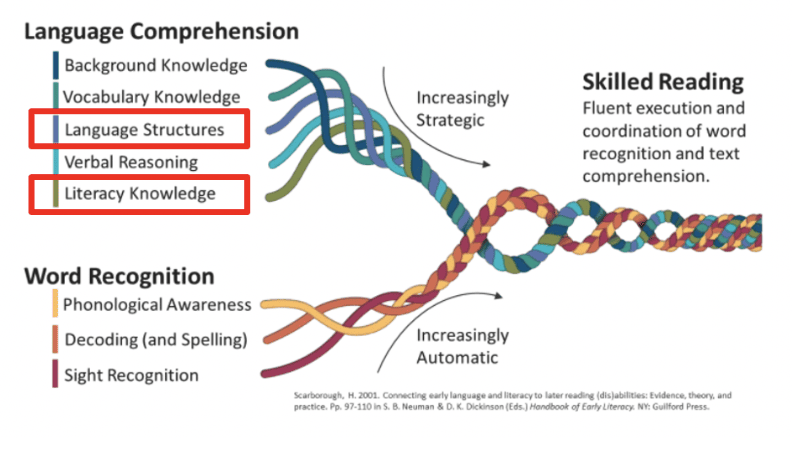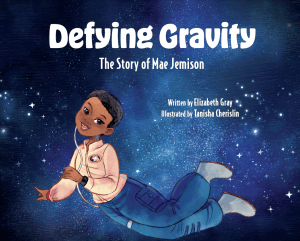Build Foundational Literacy Skills with Research-Based Strategies
Join Waterford’s Science of Reading virtual summit to explore how the brain learns to read and get strategies for effective, research-based instruction from literacy expert and Vice President of Curriculum Julie Christensen. Guidance for teachers and administrators is included!
Plus, find upcoming and on-demand video series led by early education experts through the Webinar Library, featuring topics chosen with administrators in mind like:
- Impactful Family Engagement Made Easy
- Understanding the Six Instructional Strands for Literacy
- Professional Learning: Teaching the Science of Reading
Discover the essentials of instruction for language concepts, a set of skills that support the development of reading comprehension. Then, learn strategies to help educators in your school teach language concepts skills—along with five free books available in English and Spanish!
The Elements of Language Concepts
Instruction of language concepts encompasses a broad variety of skills that help students understand how written language is organized. Within Scarborough’s Reading Rope, these skills are part of the Literacy Knowledge and Language Structures strands.

Literacy knowledge includes awareness of things like print concepts, genres, and text features. Language structure includes punctuation, parts of speech, and syntax. Let’s take a closer look at these two component skills within language concepts.
Literacy Knowledge
Print concepts
A strong awareness of print concepts for young learners includes the following:
- Print represents spoken language
- In English, text is read from left to right
- Letters can be arranged in specific ways to create words
- Words are separated by spaces
- Words can be combined to make sentences that convey ideas
- Sentences end with punctuation marks
Genres
The more book genres that a student encounters—including narrative and informational text, biography, folktales, and poetry—the broader their vocabulary and background knowledge will become. And we know that vocabulary and background knowledge are the foundational building blocks for reading comprehension.
Including various genres in a classroom or school library also helps students discover different purposes for reading, like reading a fantasy novel for enjoyment or reading a science book to learn about animals.
Text features
Text features include table of contents, headings, captions, graphs and visual information, glossaries, and more. Understanding and using these features within texts supports reading comprehension.
Language Structures
 Punctuation
Punctuation
Knowledge of the functions of punctuation–defined here as marks that convey meaning or tone in a text–supports both reading fluency and comprehension.
Parts of speech
Instruction related to parts of speech helps students understand how categories of words—like nouns, pronouns, verbs, adjectives, adverbs, prepositions, interjections, and conjunctions—play different roles in contributing to meaning within sentences and larger texts. Understanding parts of speech supports the development of reading comprehension.
Syntax
Syntax is the study of how words are arranged to build meaningful phrases and sentences. Building students’ syntactic awareness fosters sentence-level comprehension that leads to stronger overall comprehension of texts. Syntactic awareness also helps students develop strong writing skills.
Strategies for Teaching Language Concepts
Teaching about language concepts to build students’ understanding of how written language is organized is a key part of literacy instruction. As these skills are taught, it is important to tie them to meaningful texts. The goal of reading is, of course, understanding meaning. To teach language concepts skills effectively, educators can:
Model and teach print concepts skills for the youngest learners in the context of frequent rich experiences with narrative and informational texts.
Incorporate a wide range of genres to help students explore themes and subjects in a variety ways as they build vocabulary and background knowledge.
Preview books as a class to examine text features and consider how they can be supports for understanding. Teach students to ask questions such as:
- How can I use the table of contents to think about what ideas are included in this book?
- What extra information can I learn from pictures, graphs, and other visuals in the book?
- How can the headings help me organize my thoughts as I read?

Draw students’ attention to punctuation within texts. Help them think about how punctuation helps us understand important elements of a story like how characters are feeling or when a character is speaking.
Teach about how different parts of speech each play a role in contributing to the meaning of a text. How can verbs, nouns, and adjectives support understanding by answering questions about who, what, when, where, why, and how?
Explore syntax within a text. Help students understand how words are arranged to build meaningful sentences. Find sentences that join ideas using the word but, so, or because. Help students practice writing their own sentences that follow the same structure.
Additionally, according to Christensen, it can be helpful to link language concepts instruction to a theme or topic you are teaching in class. That way, students are simultaneously building content knowledge that supports their reading comprehension.
5 Free Books to Teach Language Concepts
The free books linked below represent a range of genres and can be used to teach a variety of language concepts skills. Share these books with teachers in your school to use in class or send to families as a home learning activity.
Nursery Rhyme: The Itsy, Bitsy Spider (Spanish) Foster print concepts skills by reciting this well-known rhyme as you track print from left to right and point to each word to model the connection between speech and print.
Biography: Defying Gravity: The Story of Mae Jemison (Spanish) Examine the text features in this book. What extra information can be gathered from the timeline or the diagram of our solar system? What can be learned from the glossary?

Folktale: The Little Red Hen (Spanish) Find punctuation in the book. How do question marks, exclamation points, and quotation marks help us understand the story?
Poetry: Annie Can Whistle and Other Poems (Spanish) Use this book of poems to explore parts of speech. Pay special attention to adjectives. Many poems describe feelings or experiences, so adjectives play an important role.
Informational Text: Water (Spanish) As you help students learn about the water cycle, you can also help them learn about syntax. Look for sentences that use the word “and” to combine two ideas. Next, look for two shorter sentences. Can you use the word “and” to combine them to form one sentence?
Read Waterford’s full Foundations of the Science of Reading article series and learn how to support your teachers with research-driven strategies as they plan for classroom instruction. Continue learning with three more in the series:

